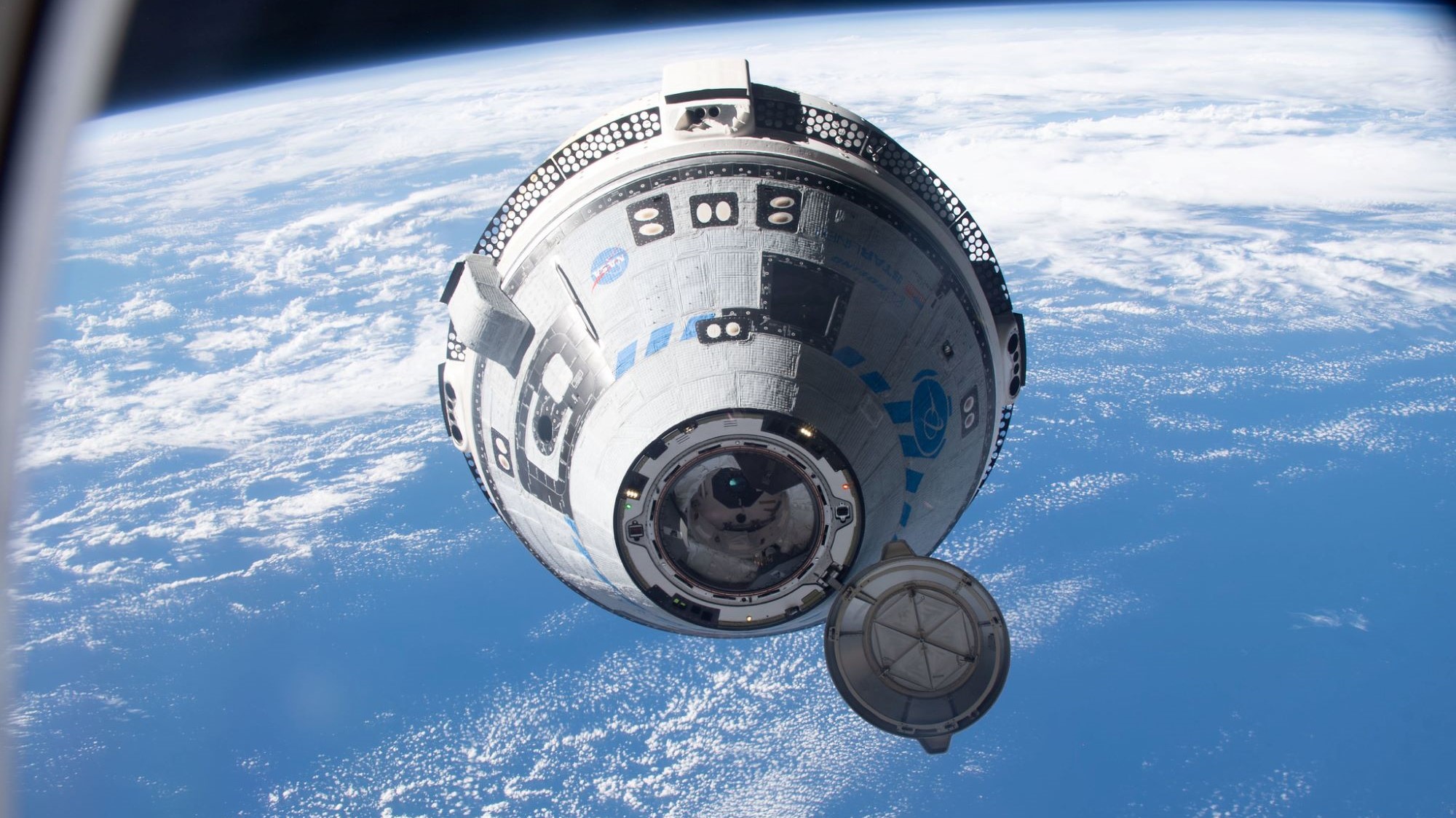

The Boeing Starliner, a space capsule that was scheduled to launch in July for its first crewed test flight, will remain on the ground for at least this summer—if not indefinitely.
At a joint press conference on Thursday, NASA and Boeing officials explained they had discovered possible flaws in the Starliner’s parachute system. Even more alarmingly, hundreds of yards of potentially flammable tape were used to wrap electric wires throughout the spacecraft. The new problems were revealed after a parade of other hiccups: a software glitch put an early end to an uncrewed December 2020 Starliner test without people aboard, and an engine valve issue scrubbed an April 2021 follow-up attempt.
The latest problems, though, may be the most surprising. “Just, wow,” was the response to the most recent Starliner news from Wendy Whitman Cobb, a space policy expert and instructor at the US Air Force School of Advanced Air and Space Studies. Design issues with parachutes are common within the space industry, she says, but the discovery of the tape almost a decade into the development of the spacecraft is grave. “The fact that they have essentially put off the next flight test indefinitely speaks to the seriousness of that matter,” Whitman says.
[Related: NASA is spending big on commercial space destinations]
Boeing should have caught the software and valve issues sooner, Whitman Cobb says, and she believes the flammable tape and parachute issue are under the microscope now out of an earned abundance of caution. “Because if something goes bad on this next one, who knows?” she says. “You might put the entire program in jeopardy.”
Boeing’s craft was meant to be the aerospace giant’s answer to competitor SpaceX’s Dragon spacecraft, a family of capsules that have been used for more than a decade to carry cargo to space and has begun ferrying crew in recent years. The long-awaited crewed test flight of the Starliner could still happen by this fall, officials said at the news conference, but it’s not clear yet what and how much work will need to be done. With the future of the Starliner hazy—and US-Russian relations at a generational low—NASA may be forced to rely on SpaceX alone for crewed space launches to the International Space Station.
In 2014, NASA contracted the two commercial spaceflight operators to ensure the space agency always has a ride into space. Boeing and SpaceX received $4.2 billion and $2.6 billion, respectively, to develop spacecraft and launch services for what would become NASA’s Commercial Crew program. Under those contracts, Boeing produced the Starliner and SpaceX made the Crew Dragon. But, now, there’s a risk that “SpaceX runs away with [the space launch market] and then you really are left with one company,” Whitman Cobb says. “Even if and when they do get Starliner going, I think they’re going to face stiff competition from SpaceX especially.”
NASA previously experienced the uncomfortable position of relying on only one other party—Russia—for ferrying astronauts to and from the International Space Station. The agency didn’t like it. And, had SpaceX not been able to begin service with its Dragon spacecraft, then that reliance would have become even more difficult following Russia’s 2022 invasion of Ukraine.
[Related: Say hello to the Commerce Department’s new space traffic-cop program]
From the start, Boeing, with its decades of experience building sophisticated aircraft and spacecraft, was presumed to have a lock on the Commercial Crew service. NASA “wanted to give SpaceX a chance, but they did not consider them at the time to be the most reliable option for the future,” Whitman Cobb says.
This is why it came as something of a shock when Starliner’s first uncrewed orbital test flight in December 2019 failed to dock with the ISS as planned due to a software problem. SpaceX, meanwhile, flew its first official astronaut-ferrying mission with a Dragon spacecraft in November 2020. Boeing, though, didn’t successfully complete the uncrewed test flight until May 2022.
Despite these setbacks, it’s unlikely Boeing will pull the plug on Starliner, barring some other disaster. ”Policy tends to continue on the trajectory that it is on unless and until something major happens,” Whitman Cobb says. ”Unless something goes horribly wrong, they’re going to make Starliner work.”
NASA, at least, almost certainly wants the Starliner to launch to provide redundancy, in case something happens with SpaceX. That could even lead to a strange situation where NASA pays Boeing for Starliner flights, even though the space agency could more easily hire a launch from SpaceX. “I know it doesn’t make much sense to any of us economically,” Whitman Cobb says, but in terms of having that assured access to space, “this gets NASA there.”
